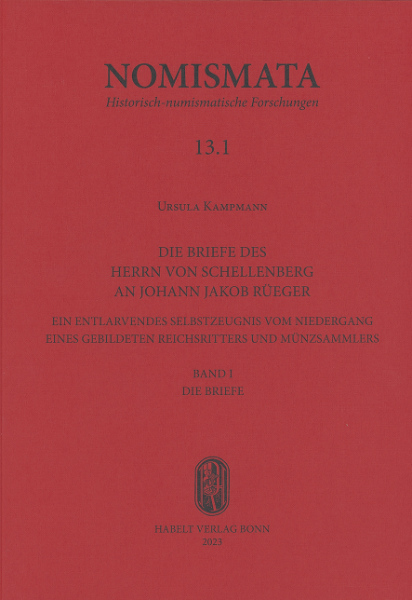Collecting Coins Around 1600
What does an imperial knight do when a lack of financial resources prevents him from affording the splendour that he believes he is entitled to by virtue of his rank? What does he do when he is unable to secure a well-paying position in the service of a prince, and the Little Ice Age drastically reduces his income? Well, he will try to gain prestige in another way. The letters of Hans von Schellenberg (1552-1609) tell us about the possibilities of an imperial knight in such a situation.
Content
Was Collecting Coins a Matter of Prestige?
The south German imperial knight Hans von Schellenberg and the Schaffhausen pastor Johann Jakob Rüeger exchanged monthly letters in the years between 1587 and 1606. They talked about everything that mattered to them: politics, religion, music, health, their relatives, history, archaeology and, of course, numismatics – after all, they were both passionate coin collectors.
150 of their letters have survived to this day. They tell us about the role of coin collecting in the early modern period and give us an insight into how antiquarian books came about. But they also teach us about the small, subtle differences that existed in their world. Even the relatively impoverished Hans von Schellenberg was an important patron, and numerous authors sought his support. This support could take many forms: lending a book or a document, or providing information about its content; Schellenberg granted an antiquarian access to his home and his collection; when he received small gifts he answered them with valuable counter-gifts and – in some cases – Schellenberg presented the author of a scholarly work with a significant gift of money in return for a dedication.
Schellenberg’s letters provide an intimate view of the so-called Republic of Letters. They reveal how closely patronage was linked to reputation and posthumous fame.
The Daily Life of a Coin Collector
Moreover, the letters answer countless questions about the everyday life of a coin collector in the early modern period. Hans von Schellenberg talks about matters of daily life that coin collectors still deal with today: Where can I get the most beautiful pieces at the most favourable price? Is a coin real or fake, and how can I tell? How do I identify a coin, and who can help me if I cannot do it myself?
Schellenberg’s letters are unique as they provide us with detailed knowledge of the everyday life of an early modern coin collector. They are incredibly valuable precisely because Hans von Schellenberg was not a powerful prince who could rely on his well-connected agents. Instead, he was a financially weak imperial knight who built up his collection with limited resources.
The Project of Schellenberg’s Letters
Ursula Kampmann has been working on the analysis and the publication of these letters for more than a decade. She took the effort to meticulously transcribe the 150 pieces of writing and to translate them from Early New High German into modern German. Thanks to her work, lay readers who understand German will also be able to enjoy the letters of eloquent Hans von Schellenberg, who – as was customary in his time – never minced his words.
This book is the first of a total of three volumes. The complete work is part of the NOMISMATA series, edited by Johannes Nollé and Hertha Schwarz, and published by the renowned Habelt publishing house in Bonn. While the first part of 555 pages contains the historical sources themselves, the author is already working on the two subsequent volumes. The second volume will present the historical context of the letters and the third will contain commentaries on their contents.





